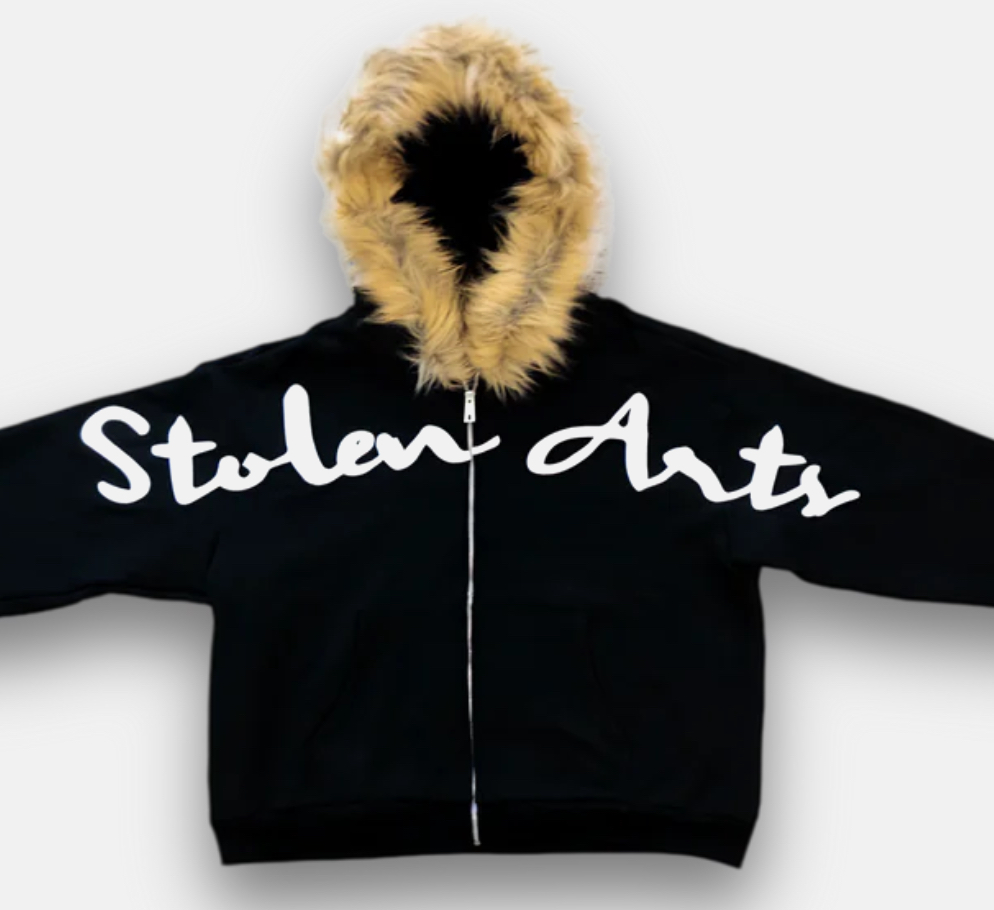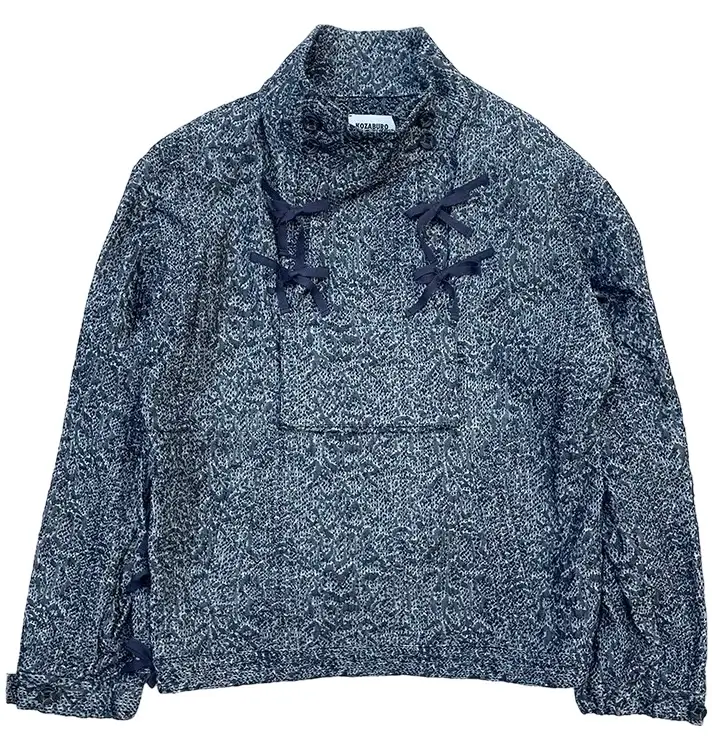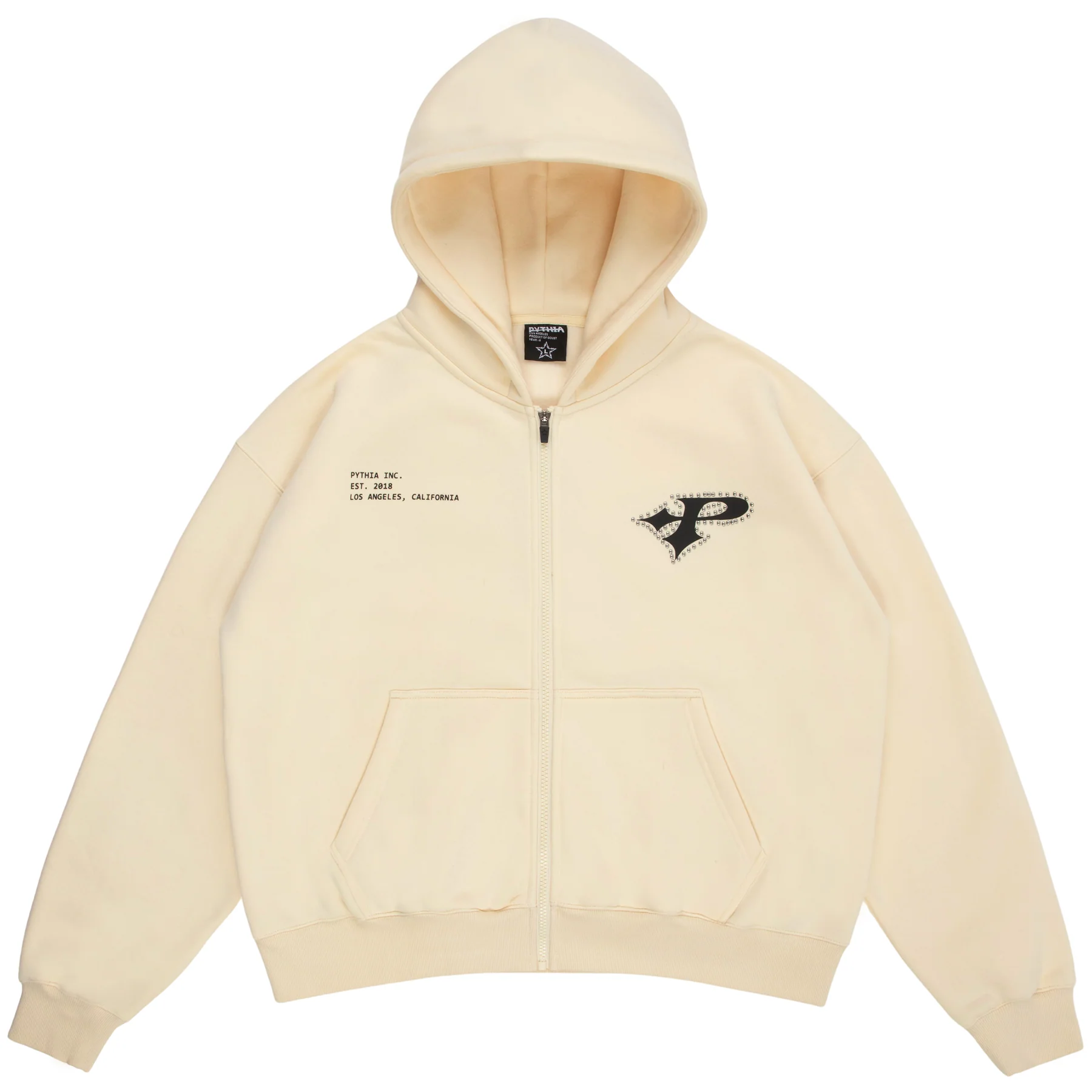In an era where fashion churns trends at a breakneck pace, true craftsmanship—the kind that demands to be noticed not by volume but by gravity—stands out like a whispered secret in a crowded room. STOLEN ARTS, a brand known for threading countercultural defiance with sartorial precision, encapsulates that tension nowhere more vividly than in its Black Fur Hoodie. It is not simply outerwear. It is a statement in texture, silhouette, and ideology—a luxurious mutiny against the predictable.
The Black Fur Hoodie arrives less as a product and more as a confrontation: against norms, against disposability, against the passive experience of clothing. It challenges the wearer to reconsider comfort as a site of power, and fur—oft-maligned, misused, or misunderstood—as a symbol reinterpreted for new generations of aesthetic radicals.
Material as Manifesto
First impressions of the STOLEN ARTS Black Fur Hoodie are dominated by material. The fur, jet-black and abyssal, commands immediate attention. But this is no ordinary fur. In keeping with evolving ethical standards and the brand’s commitment to responsible craftsmanship, the hoodie utilizes high-grade faux fur engineered to mimic the dense, weighty tactility of natural pelts without the ecological and ethical toll.
The fibers are layered and textured in a manner that subverts the sterile feel of most synthetics. Brushing your hand across it is an experience both tactile and psychological: it invokes memory, luxury, defiance. The weight of the hoodie is deliberate. Draping heavily over the frame, it creates an aura of gravity, as if cloaking oneself not just in warmth, but in intention.
There is a certain rebelliousness baked into the fabric. Where traditional fur garments often carried connotations of aristocracy and exclusion, STOLEN ARTS reclaims the medium, democratizing it for the street, the underground, the self-made. The fur is no longer a badge of inherited wealth but a weapon of chosen identity.
A Study in Form and Function
The hoodie’s design adheres to STOLEN ARTS’ signature philosophy: silhouettes that are both familiar and quietly subversive. At a glance, the piece mirrors the classic proportions of a standard hoodie—relaxed fit, generous hood, ribbed cuffs—but the devil, as ever, is in the deviations.
The hood itself is engineered oversized, descending almost like a cowl when worn down and enveloping the head completely when raised, evoking images of cloaked figures in dystopian dreamscapes. It is a design decision that imbues the garment with theatricality: the wearer becomes larger-than-life, mythic.
The sleeves are slightly elongated, spilling over the hands when the arms are relaxed, a nod to Japanese streetwear’s fixation with proportion play. Kangaroo pockets are embedded seamlessly into the body, nearly invisible against the fur’s texture but easily accessible, adding to the piece’s utilitarian edge.
A subtle, almost hidden branded tab peeks from the seam—a tiny emblem of authorship for those who know. STOLEN ARTS does not need garish logos or oversized branding; the garment’s architecture and texture announce it more loudly than any typography could.
Cultural Reverberations
To understand the significance of the Black Fur Hoodie is to situate it within the broader cultural moment. In an age where fashion oscillates between the maximalism of virtual aesthetics and the quiet luxury of heritage brands, STOLEN ARTS proposes a third path: garments that are loud without shouting, rich without opulence, radical without costume.
The Black Fur Hoodie is a piece for those who move through the world with a sharpened sense of self, for whom clothing is not armor against attention, but a tool of selective visibility. It is not meant to be worn thoughtlessly. Like a piece of protest art or a guerrilla poster campaign, it demands engagement.
There are echoes here of punk’s reclamation of traditional materials—think leather jackets once reserved for working-class laborers, appropriated as symbols of anarchy—or of hip-hop’s reinterpretation of luxury brands as status markers of self-determination. The Black Fur Hoodie stands firmly in this lineage: appropriation as reinvention, rebellion as refinement.
The Politics of Comfort
Comfort, in the world of STOLEN ARTS, is not surrender. It is resistance. The Black Fur Hoodie is sumptuous, yes—but its comfort is purposeful. To move easily, wrapped in softness, is itself a rejection of systems that demand discomfort as a precondition of worth: corporate suits, restrictive silhouettes, sartorial gender norms.
The hoodie allows the wearer to claim space in a way that is both soft and severe. It envelops without suffocating, asserts without posturing. It is armor for an era where visibility itself is a battleground.
In this way, the Black Fur Hoodie transcends its material form. It becomes an artifact of a politics not often spoken aloud in fashion: that the right to comfort, the right to inhabit one’s body on one’s own terms, is revolutionary.
Flow
The STOLEN ARTS Black Fur Hoodie is not content to be beautiful. It demands to be powerful.
It is a meditation on texture as language, silhouette as gesture, comfort as insurgency. It fits into no easy categories—neither purely streetwear, nor luxury, nor protest piece—but rather slashes across them, carving out a new territory altogether.
To wear it is to participate in that carving. To embody a contradiction: soft and defiant, cloaked and revealed, classical and future-facing.
In a market saturated with noise, STOLEN ARTS offers a piece that moves with quiet violence. The Black Fur Hoodie is a whisper heard louder than a scream—a testament to what happens when fashion dares to steal not just attention, but meaning itself.
No comments yet.








